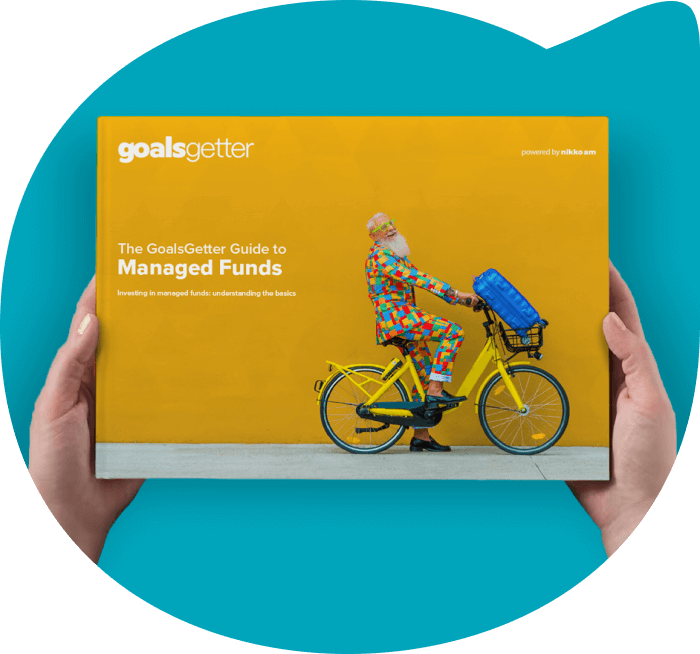Find out about the risks of investing and how to manage them
If you've got some money to invest, managed funds may work for you. Of course, as with any form of investing, there are risks. So, in this article, we outline what those risks are and how you can manage them.What is investment risk?
There's always a chance that an investment will return less than expected. That’s generally what people think of as investment risk.
Some of the risk factors
Every type of investment has certain risks. Investors that take on higher risk have an expectation of higher returns.
- Market Risk is generally what people think of when it comes to investing. It’s the risk that your investment can fall in value due to general or market-wide events. For example, financial crises, natural disasters, inflation, recession or political upheaval can all contribute to the value of investments falling.
- Company-Specific Risk is the risk of an investment in a company falling due to the nature of its business such as the company’s products (the failure of a new launch or a defect that needs correcting, for example) or an accident or fine that costs the company a large amount of money.
- Credit Risk is more related to bond investments. It’s the risk that the company (or Government, or entity) that you’ve lent money to is unable to repay either the agreed interest or the actual loan.
- Interest-Rate Risk is, again, more related to bond funds. It refers to the fact that the value of a bond changes as interest rates move. If interest rates rise, then the value of any bonds you own will fall because the bonds’ interest rate is fixed. So, if the market offers higher interest rates, your bonds (which have a lower interest rate) become proportionally less attractive.
- Currency risk refers to fluctuations in currency values. For example, if you invest in Australian dollars, you’ll, of course, get Australian dollars back. So, depending on how the currency moves, you could receive fewer or more New Zealand dollars when the investment is converted back.
- Liquidity Risk refers to how quickly and easily you can sell your investment for cash. The more illiquid your investment, the longer you can expect to sell it for a fair price. Or, or in order to achieve a quick sale, you may need to reduce the price you were prepared to receive. A good example is your house. It is a single asset of high value, but it would be extremely difficult to cash it in tomorrow because you must go through a process.
Cash funds, term deposits and good-quality bonds that are close to maturity are low-risk investments. Such funds are usually highly liquid — you should be able to get back your money within a day or two. Fees and volatility in returns should also be low compared to higher-risk investments. Though not the same as depositing money in a bank, you can be reasonably confident of what return you'll receive and that your money will be available in a short space of time.
Higher-risk investments
An obvious example of a higher-risk investment is an equity fund (which holds shares in companies). You see, equities (shares) can increase or decrease in big ranges, like by 10 – 20% in any given 12-month period. Individual securities (shares in a single company) are generally more volatile and can double or halve in value over a short space of time.
Diversify to manage risk
You can limit your risk by diversifying — spreading your assets around. For example, in the fourth quarter of 2018 (from October, November, December), global equity markets dropped by on average 15%. But, within that, some stocks decreased or increased in value by 60 - 70%. Imagine you have just six New Zealand stocks with $5000 in each (a $30,000 portfolio). If something happens to one of those stocks, the impact will be big. However, if you're in a diversified fund of 30 stocks and something happens to a stock, the impact should be much smaller.
Managed funds enable you to access either
- Single-sector funds (offering exposure to a specific asset class, like global shares or New Zealand bonds, and you can use these to select your preferred mix of asset classes).
- Diversified funds that offer a pre-selected basket of asset sectors (Balanced or Growth Funds, for example). By minimising the impact of poor performance by a particular industry or asset class, you can reduce your level of risk.
Everyone views risk differently, and there are a many factors that can influence your risk appetite, including, psychological and cultural. Here are some things to consider:
- Timeframe: How long do you have to reach your investment goal? The more time you’ve got, the more risk you may be comfortable with because you have time to recoup any decreases in the value of your investment. Imagine you’re saving for a house deposit, and your investment drops 15% in value just before you’re about to buy. That would be a big problem, so a low-risk cash fund, that only yields around 2% interest per year, may be a better option. On the other hand, if you're saving for a holiday in five years, you might not be bothered if the value of your fund fluctuates. So, you may opt for higher-risk investment, like in equities, with the likelihood of a higher return.
- Age: Similar to timeframe, the younger you are, the more time you have to recoup losses and so you might be willing to take higher risks. As you get closer to, and beyond 65 your investment strategy is likely to need to change.
- Attitude to risk: How comfortable are you with the ups and downs of markets can be influenced by your household income and number of dependents. For example, the more money you have invested and the wider the gap between your income and expenses, the more tolerant you may be to fluctuations in the market.
When it comes to finance and investments, the presence of risk is desirable. The important questions to ask, though, are as follows: How, when, where and why should we accept certain risks? Also, what are the advantages and disadvantages of taking the ‘safe road’?
With GoalsGetter you can plan your investment using our 'Set a goal' option, and view a projection of how your end value can change by choosing types of funds with different risk indicators (profiles). Give it a go!
Nikko Asset Management New Zealand Limited (Company No. 606057, FSP22562) is the licensed Investment Manager of Nikko AM NZ Investment Scheme, Nikko AM NZ Wholesale Investment Scheme and the Nikko AM KiwiSaver Scheme. This material has been prepared without taking into account a potential investor’s objectives, financial situation or needs and is not intended to constitute personal financial advice, and must not be relied on as such. The Product Disclosure Statements are available on our website: https://www.nikkoam.co.nz./invest/retail.




